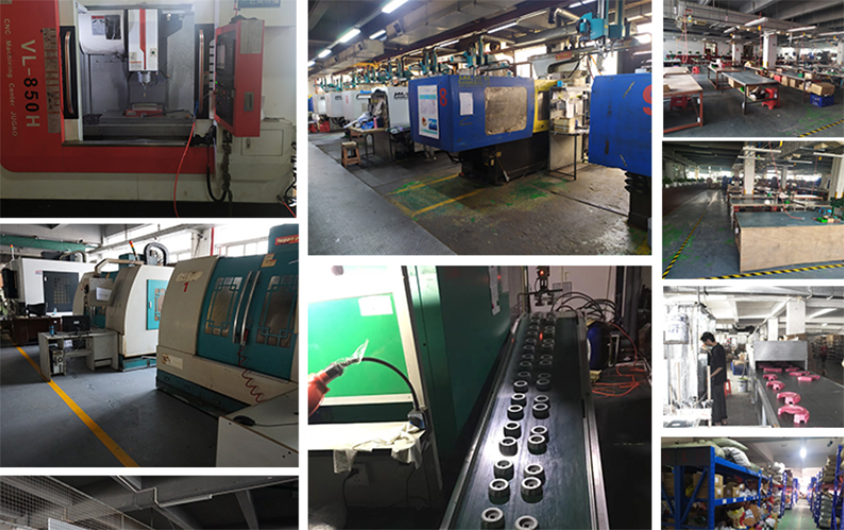The Need for Innovation: Overcoming Traditional Limitations
In the realm of manufacturing, plastic molding has long been a cornerstone of production, yet traditional methods have faced persistent challenges that hinder efficiency. Conventional processes like basic injection molding and compression molding often struggled with lengthy cycle times, high material waste, and limited precision—especially when producing complex geometries. For example, early injection molding machines required extended cooling periods to solidify parts, slowing down production rates, while manual trimming of excess plastic (known as flash) added labor costs and generated scrap. These inefficiencies became increasingly problematic as consumer demand for smaller, more intricate plastic components grew, pushing manufacturers to seek transformative solutions.
Today, advanced plastic molding techniques are addressing these pain points head-on. By reimagining materials, machinery, and processes, these innovations are not only accelerating production but also reducing waste, improving precision, and lowering operational costs. From medical devices requiring micron-level accuracy to automotive parts demanding high durability, modern molding technologies are enabling manufacturers to meet stricter standards while staying competitive in a global market.
Precision Redefined: Micro-Molding and High-Speed Injection Molding
One of the most impactful advancements in plastic molding is the rise of micro-molding, a technique tailored for producing minuscule components—some as small as a grain of sand—with extraordinary precision. Used in industries like electronics and medical devices, micro-molding relies on specialized machinery with tightly controlled temperature and pressure settings, ensuring that even the tiniest features (such as microchannels in lab-on-a-chip devices or connectors in wearable tech) are replicated flawlessly. This precision eliminates the need for post-production machining, a time-consuming step in traditional molding, and reduces material waste by using only the exact amount of plastic required. For manufacturers, this translates to faster turnaround times for high-value, small-scale parts, a critical advantage in sectors where miniaturization is key.
High-speed injection molding is another game-changer, designed to slash cycle times without sacrificing quality. By optimizing heating and cooling systems—such as using advanced water channels in molds to distribute temperature evenly—and employing high-performance polymers that solidify quickly, these machines can produce parts in seconds rather than minutes. In packaging industries, for instance, high-speed molding enables the mass production of bottle caps and food containers at rates of thousands per hour, meeting the demands of fast-moving consumer goods markets. Additionally, the reduced cycle time lowers energy consumption per part, as machines spend less time in operation, contributing to both cost savings and sustainability.
Smart Molding: Gas-Assisted and Co-Injection Technologies
Gas-assisted injection molding (GAIM) has emerged as a revolutionary technique for creating hollow or lightweight parts with enhanced structural integrity. The process injects molten plastic into a mold, then introduces pressurized gas (typically nitrogen) to push the plastic outward, filling thin walls or intricate cavities while creating a hollow core. This method reduces the amount of plastic used by up to 30% compared to solid molding, cutting material costs and lowering part weight—an important factor in automotive and aerospace applications, where fuel efficiency depends on reducing vehicle mass. GAIM also minimizes warping, as the gas pressure ensures uniform cooling, reducing the need for post-production corrections and improving overall yield.
Co-injection molding takes efficiency a step further by combining two different materials in a single cycle. For example, a rigid plastic core can be encapsulated in a flexible outer layer, or a recycled plastic base can be overlaid with a virgin plastic surface for aesthetic appeal. This eliminates the need for secondary assembly steps, such as gluing or welding, streamlining production. In consumer goods like toothbrushes—where a hard handle and soft grip are desired—co-injection molding produces the final product in one pass, reducing labor and time. It also allows manufacturers to use cheaper or recycled materials in hidden layers, lowering costs without compromising on functionality or appearance.
Automation and Data-Driven Optimization
The integration of automation and artificial intelligence (AI) has transformed plastic molding from a labor-intensive process into a highly efficient, data-driven operation. Modern molding facilities now use robotic arms for tasks like loading raw materials, removing finished parts, and inspecting for defects—operations that once required constant human oversight. These robots work tirelessly, reducing downtime between cycles and ensuring consistent handling, which minimizes damage to delicate parts. In medical device manufacturing, where sterility is critical, automated systems also reduce the risk of contamination, a key advantage over manual processes.
AI-powered sensors and machine learning algorithms take efficiency even further by monitoring every aspect of the molding process in real time. These systems track variables such as temperature, pressure, and cycle time, alerting operators to deviations that could signal a problem—like a clogged nozzle or a worn mold component—before defects occur. Over time, the algorithms learn from historical data to optimize settings, such as adjusting cooling times based on ambient temperature or fine-tuning injection pressure for different material batches. This predictive maintenance and process optimization reduce waste from scrapped parts and unplanned downtime, boosting overall equipment effectiveness (OEE) by up to 20% in some cases.
Sustainability: Efficient Molding Meets Eco-Conscious Manufacturing
In an era of growing environmental awareness, advanced plastic molding techniques are aligning efficiency with sustainability. One key innovation is the use of bio-based polymers, derived from renewable sources like corn starch or sugarcane, which can be molded using existing equipment with minimal adjustments. These materials reduce reliance on fossil fuels and lower carbon footprints, making them ideal for eco-friendly packaging and disposable products. Additionally, advances in material science have improved the recyclability of molded parts, with some polymers now designed to break down more easily in industrial composting facilities.
Closed-loop recycling systems are another sustainability breakthrough, allowing manufacturers to reuse plastic scrap generated during molding. Grinders integrated into production lines convert excess flash or defective parts into pellets, which are then mixed with virgin plastic and reintroduced into the molding process. This not only reduces waste sent to landfills but also cuts material costs, as recycled pellets are often cheaper than new ones. In automotive manufacturing, where large parts like bumpers generate significant scrap, closed-loop systems have reduced material waste by over 40%, demonstrating that efficiency and environmental responsibility can go hand in hand.
Future Trends: 3D Printing and Beyond
3D printing, or additive manufacturing, is increasingly complementing traditional molding techniques, offering new avenues for efficiency in prototyping and small-batch production. Unlike traditional molds, which can take weeks to fabricate and cost thousands of dollars, 3D-printed molds can be produced in days at a fraction of the cost, allowing manufacturers to test new designs quickly. For low-volume runs—such as custom medical implants or specialized industrial components—3D printing eliminates the need for expensive tooling altogether, making small-scale production economically viable. As 3D printing materials advance, including high-performance polymers that can withstand high temperatures and stress, this technology is even beginning to compete with molding for certain end-use parts, offering unprecedented flexibility.
Looking ahead, the convergence of these technologies—high-speed molding, automation, AI, and 3D printing—promises to push efficiency to new heights. Imagine a smart factory where AI optimizes a high-speed injection molding line, while 3D-printed tooling allows for rapid design changes, and closed-loop recycling ensures zero waste. Such a system would not only produce parts faster and cheaper but also with minimal environmental impact.
Conclusion: Efficiency as a Catalyst for Innovation
Advanced plastic molding techniques are more than just incremental improvements—they are reshaping the manufacturing landscape by redefining what it means to be efficient. From micro-molding’s precision to AI’s predictive power, these innovations are enabling manufacturers to produce better parts in less time, with fewer resources. As consumer demands for quality, sustainability, and affordability continue to grow, the ability to leverage these technologies will be a key differentiator in the global market. For businesses willing to invest in advanced molding, the rewards are clear: lower costs, higher productivity, and a greener footprint—all of which position them to thrive in the future of manufacturing.
Table of Contents
- The Need for Innovation: Overcoming Traditional Limitations
- Precision Redefined: Micro-Molding and High-Speed Injection Molding
- Smart Molding: Gas-Assisted and Co-Injection Technologies
- Automation and Data-Driven Optimization
- Sustainability: Efficient Molding Meets Eco-Conscious Manufacturing
- Future Trends: 3D Printing and Beyond
- Conclusion: Efficiency as a Catalyst for Innovation

